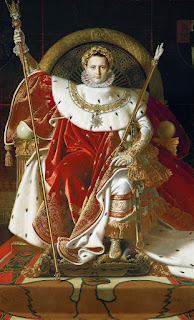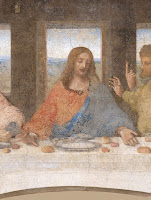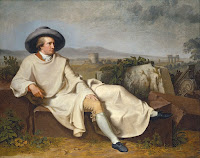 |
| The Last Supper by Leonardo da Vinci (1495-1498) |
The Last Supper Painting by Leonardo da Vinci
 |
| Portrait of a Man in Red Chalk (Self-Portrait) by Leonardo da Vinci (1512) |
 |
| Sala delle Asse (The Room of the Tower) by Leonardo da Vinci (1498) |
The Last Supper Analysis in Historical Context
 |
| Portrait of Ludovico Sforza by Giovanni Ambrogio de Predis (1494-1498) |
 |
| The Original Last Supper Painting in 1970s Before Restorations |
 |
| Crucifixion by Giovanni Donato da Montorfano (1495) |
 |
| Man with a Halbard by Donato Bramante (1486-1487) |
The Last Supper Medium
 |
| Church of Holy Mary of Grace (Santa Maria delle Grazie) Home of the Last Supper |
 |
| Portrait of Caravaggio by Ottavio Leoni (1621) |
 |
| Portrait of Louis XII by Jean Perréal (1514) |
 |
| Napoleon I on his Imperial Throne by Jean-Auguste-Dominique Ingres (1806) |
 |
| Self-Portrait by Oreste Silvestri (1900-1936) |
 |
| Pinin Brambilla Barcilon and Gian Alberto Dell’Acqua in the Restoration of San Marco Church Milan (1956-1957) |
Who's Who in the Last Supper
 |
| The Last Supper Detail of Apostles Bartholomew, James Minor and Andrew |
 |
| The Last Supper Detail of Apostles Judas, John and Peter |
 |
| The Last Supper Detail of Apostles Thomas, Philip and James the Greater |
 |
| The Resurrection of Jesus Christ (Kinnaird Resurrection) by Raphael (1502) |
 |
| The Last Supper Detail of Apostles Matthew, Jude Thaddeus and Simon the Zealot |
 |
| The Last Supper Detail of Hands of the Jesus |
 |
| The Last Supper Names of the Apostles |
The Last Supper of Jesus Christ
 |
| The Last Supper Detail of Jesus Christ |
The Last Supper Matthew the Apostle
 |
| The Last Supper Detail of Matthew the Apostle |
 |
| The Calling of Saint Matthew by Caravaggio (1599-1600) |
The Last Supper Luke
 |
| Luke the Evangelist by Jean Bourdichon (1503-1508) |
The Last Supper John the Apostle
 |
| The Last Supper Detail of John the Apostle |
The Last Supper Judas Iscariot
 |
| The Last Supper Detail of Judas Iscariot |
Apostle Peter and the Last Supper
 |
| The Last Supper Detail of Peter the Apostle and Knife |
The Last Supper Mary Magdalene
 |
| Portrait of Mary Magdalene by Andrea Solari (1524) |
The Last Supper Facts
The Last Supper portrait is the matter of interesting facts due to its history. Leonardo’s painting, which he completed
in 1498, became unrecognizable after the 1500s due to its flaking paints due to
moisture. In 1532, Italian polymath Gerolamo Cardano, known for an earlier
structure for binomial coefficients and the binomial theorem, commented
“blurred and colorless compared with what I remember of it when I saw it as a
boy” about the masterpiece. A door was opened in the middle of the fresco,
which became unrecognizable in 1652, and later, when it was understood that it
was the work of Leonardo, the door was closed with a brick wall.
 |
| Old Pilgrim by Pietro Michelangelo Bellotti (1660-1670) |
 |
| Goethe in the Roman Campagna by Johann Heinrich Wilhelm Tischbein (1787) |
 |
| The Last Supper Detail of Windows Behind Jesus Christ |
Comments on the Last Supper Painting Meaning
 |
| Portrait of Luca Pacioli by Jacopo de’ Barbari (1495) |
Study Drawings of the Last Supper Fresco and Early Copies
 |
| The Last Supper by Giovanni Pietro Rizzoli (1520) |
The Last Supper Art in Popular Culture
 |
| The Sixty Last Suppers by Andy Warhol (1986) |
 |
| The Sacrament of the Last Supper by Salvador Dalí (1955) |
 |
| The Last Supper by Jacopo Tintoretto (1594) |
 |
| The Last Supper by Cosimo Rosselli and Biagio d’Antonio (1481-1482) |
 |
| Some Living American Women Artists After Last Supper by Mary Beth Edelson (1972) |
 |
| The Last Supper by Emil Nolde (1909) |
 |
| Self-Portrait Looking at the Last Supper by Marisol Escobar (1984) |
The Last Supper in the Bible
 |
| The Exodus Departure of the Israelites David Roberts (1829) |
The Last Supper Location, Milan
 |
| The Site of the Last Supper the Cenacle on Mount Zion in Jerusalem |
The Last Supper Price
 |
| Mona Lisa by Leonardo da Vinci (1503-1517) |
Day of the Last Supper Holy Thursday
 |
| The Taking of Christ (The Arrest of Jesus) by Caravaggio (1602) |
The Last Supper by Leonardo da Vinci
 Reviewed by Articonog
on
February 27, 2022
Rating:
Reviewed by Articonog
on
February 27, 2022
Rating:
 Reviewed by Articonog
on
February 27, 2022
Rating:
Reviewed by Articonog
on
February 27, 2022
Rating:





No comments: